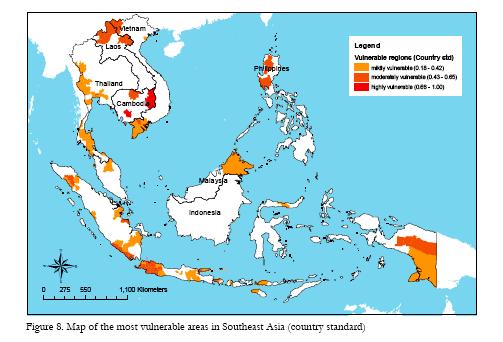Distributed computer projects are taking off in a big way. “Many are run on a volunteer basis, and involve users donating their unused computational power to work on interesting computational problems.” That usually means looking for extraterrestrial life or working out the structure of black holes or proteins while your computer idles away. Herbaria@home is a bit different. When you sign up as a volunteer, you receive scans of herbarium sheets, you digitize the label information, and these data are then added to the herbarium’s information system. Actually, there are other examples of such projects, which use the public’s spare brain-power, as well as their spare computer-power. I wonder if this approach could be used to improve genebank documentation. Perhaps to geo-reference tricky accessions? Or how about to characterize the morphology of different varieties from photos?
Land sharing or sparing?
That is one of the questions addressed by a paper in Journal of Applied Ecology which looks at the ecogeographic distribution of organic farming in the UK. “Land sparing” means excluding land from intensive agriculture to protect biodiversity. “Land sharing” is a contrasting strategy which would make all agricultural land better for biodiversity. The study recommends
…continuing to use intensive agriculture to meet our food production targets, but using organic farms in suitable areas to provide islands of biodiversity, as well as a smaller amount of food.
So the vote is for land sparing. Ok, fair enough. What gets me, though, is that, as usual, it is only the effect of agriculture on the surrounding wild biodiversity that is being considered. What about the biodiversity that is an integral part of the agricultural system itself? Doesn’t agrobiodiversity count for something in all this?
Help for coffee farmers in Central America
From Andy Jarvis:
What if major coffee regions in Latin America were to disappear altogether in the next generation? What would that mean for you as a consumer? Or your children? And what about coffee farmers in Latin America? And their children? What will they do if their livelihoods disappear? At CIAT (International Center for Tropical Agriculture), we have been working for years to develop crop targeting tools based on climate scenarios that show how climate change could alter production systems throughout the region in the years to come. We propose to expand our work to generate a range of possible scenarios for changing patterns of land use in Mexico and Central America, and to partner with CRS (Catholic Relief Services) to help coffee farmers develop strategies to more effectively mitigate and adapt to the impacts of climate change under each one. In collaboration with CRS, we can directly impact 7000 farmers and generate learning that helps hundreds of thousands more.
Like the idea? Then vote for it!
Rethinking crop geography
Our occasional contributor Andy Jarvis unleashes the changing geography of agricultural suitability on an unsuspecting world in Copenhagen.
Climate vulnerability in SE Asia mapped
The International Development Research Centre’s Economy and Environment Program for South-East Asia (EEPSEA) has just published a study on the effects of climate change on SE Asia. The authors first mapped climate hazard, including all kinds of different things, from drought to cyclones to sea level rise. They then compared that with maps of population density and adaptive capacity. That allowed them to identify a number of vulnerability hotspots. And here they are, the most vulnerable areas in each country:
All good places in which to start looking for agrobiodiversity to collect for ex situ conservation before it disappears, and in which to test agrobiodiversity for its possible contribution to adaptation.
